Table of Contents
Ever dreamt of sinking your teeth into a perfectly tender, flavor-packed meatball? Forget those dry, crumbly disappointments! We're about to unlock the secrets to making the best ever meatball recipe, and yes, we're going big with 3 lbs of ground beef. This isn't just any meatball recipe; it's a guide to creating juicy, melt-in-your-mouth spheres of deliciousness that’ll have everyone begging for more. I know, because I've been there, wrestling with tough meatballs that taste like cardboard. That's why I've spent years perfecting this recipe, and now I'm sharing all my tips and tricks with you. In this article, we'll break down why this recipe works so well, the essential ingredients you'll need, step-by-step instructions for making them, some fun variations, and all the answers to your meatball questions. Get ready to become a meatball master, because after reading this, your 3 lbs of ground beef will never be the same.
Why This 3 lbs Ground Beef Meatball Recipe Works
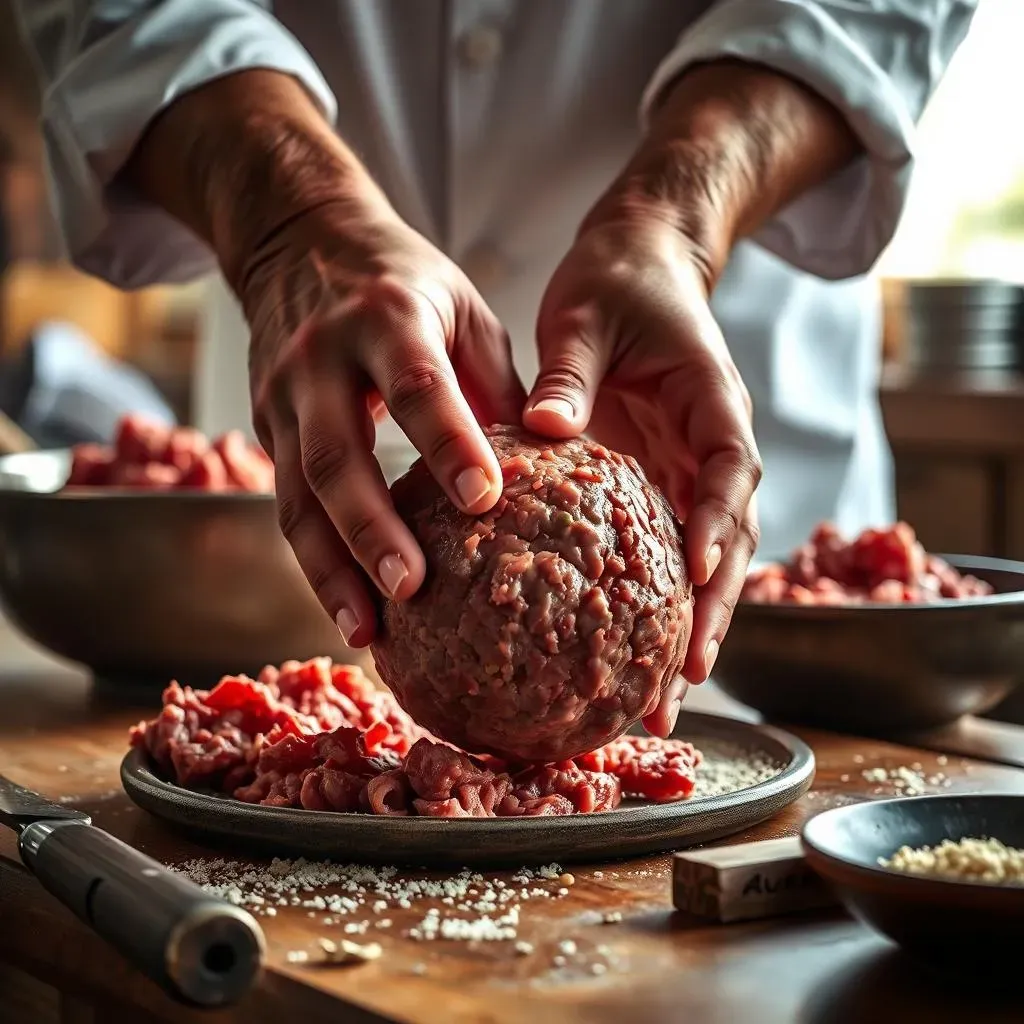
Why This 3 lbs Ground Beef Meatball Recipe Works
Okay, so you're probably wondering, what makes this meatball recipe so special? It's not just about throwing some ground beef in a bowl and hoping for the best. The magic is in the details. First, we're using a specific ratio of meat to breadcrumbs and eggs. It's not some random guess, it's a carefully calculated balance that creates a "panade." Think of it like a sponge – the breadcrumbs soak up the moisture, and when cooked, they release it back into the meat, keeping the meatballs juicy. This prevents the meat from seizing up and becoming tough. It's a game changer, trust me. We also make sure not to overmix the meat, that’s a common mistake. Overworking the mixture develops the proteins too much, resulting in a dense, rubbery texture. Instead, we mix just enough to combine everything, keeping the meatballs light and tender.
Key Ingredients for 3 lbs Ground Beef Meatballs
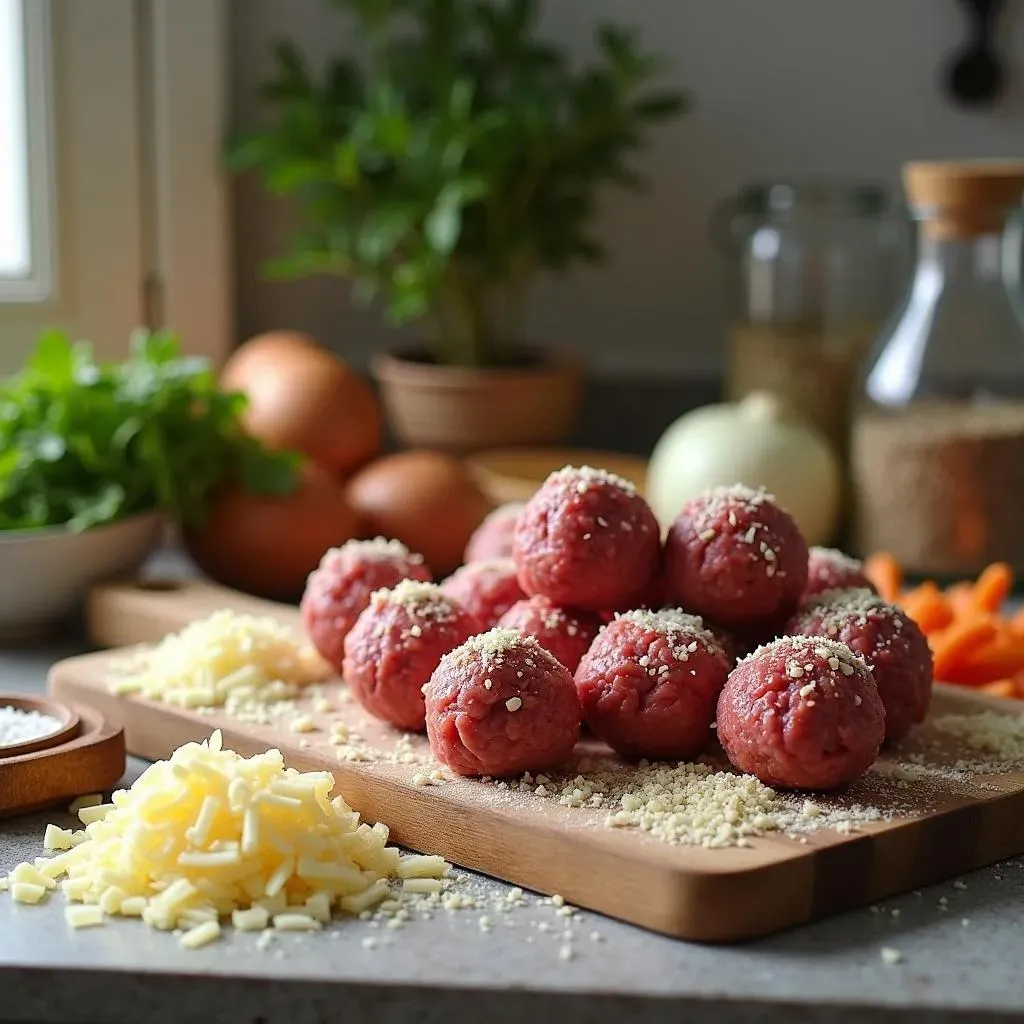
Key Ingredients for 3 lbs Ground Beef Meatballs
Alright, let's talk ingredients. This isn't rocket science, but each component plays a crucial role. First, obviously, we need our star, 3 lbs of ground beef. I prefer using 80/20 blend, which means 80% lean and 20% fat. The fat is important – it keeps the meatballs moist and flavorful. Don't go for super lean beef here, you'll end up with dry, sad meatballs. Then we have the breadcrumbs. I like to use Italian seasoned breadcrumbs, but plain ones work too. We're using about 1 1/2 cups. They’re not just filler; they help create that panade we talked about, soaking up moisture and keeping the meat tender. And speaking of moisture, we can’t forget the eggs. We're using 3 large eggs in this recipe. They act as a binder, holding everything together. Finally, we have our flavor boosters: grated parmesan cheese (about ¾ cup), some finely chopped onion (½ cup), a good amount of minced garlic (about 4 cloves), and a generous sprinkle of Italian seasoning, salt, and pepper.
How to Make the Best 3 lbs Ground Beef Meatballs
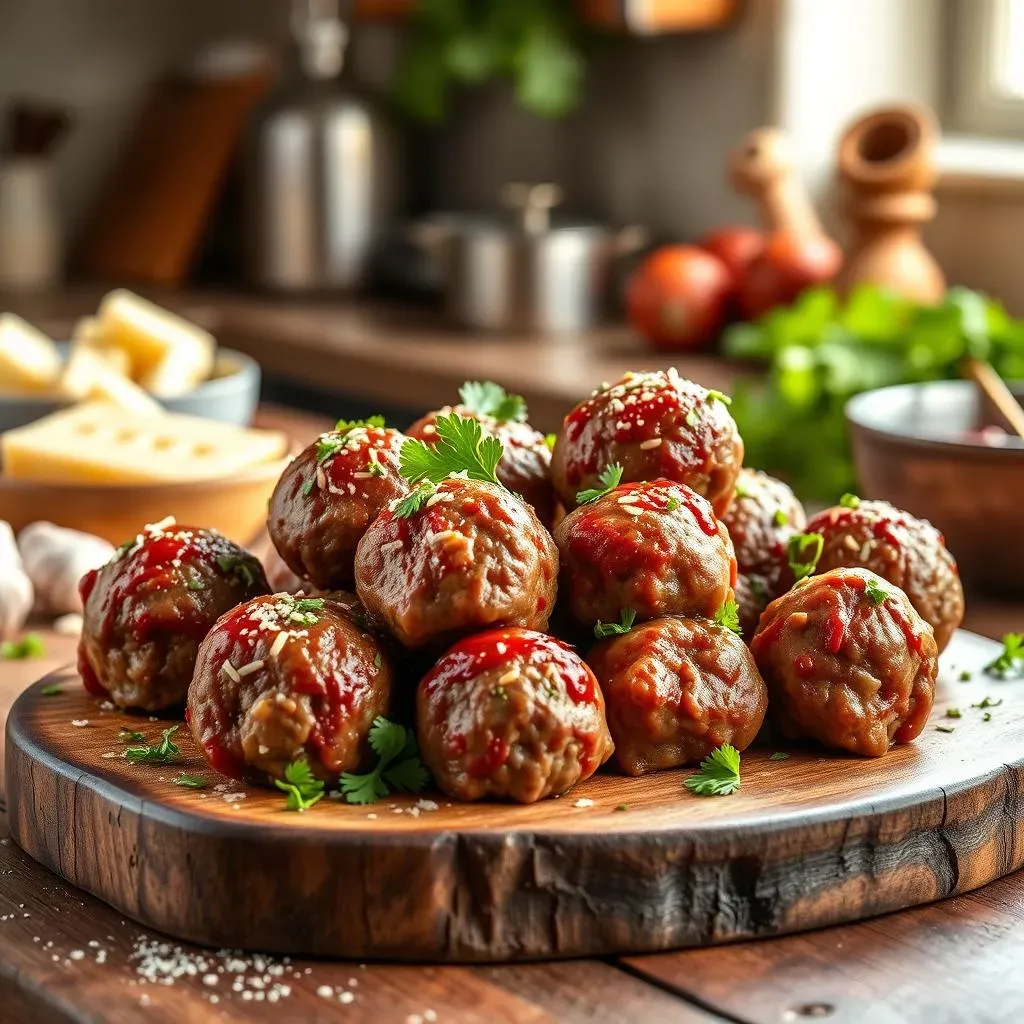
How to Make the Best 3 lbs Ground Beef Meatballs
Okay, so you've got your ingredients, now let's get down to business. First, in a large bowl, gently combine the breadcrumbs, eggs, parmesan cheese, chopped onion, minced garlic, Italian seasoning, salt, and pepper. I like to use my hands for this, it's just easier to get everything mixed evenly. Don't overmix it at this stage, just combine. Then, add the ground beef to the bowl. Here's the key: mix everything with a light touch. You're not kneading bread here; you're just trying to get everything combined. Overmixing will lead to tough meatballs, and we're not about that life. Once everything is just combined, it’s time to shape the meatballs. I like using a medium-sized cookie scoop to get them all roughly the same size, about 1.5 - 2 inches in diameter. This helps them cook evenly. Roll them gently between your palms to form a nice round shape. Now, you have a choice: you can either bake or pan-fry them.
Meatball Making Steps | Key Actions |
|---|---|
Combine Wet & Dry | Gently mix breadcrumbs, eggs, cheese, onion, garlic, spices |
Add Ground Beef | Incorporate beef with a light touch |
Shape Meatballs | Use a scoop, gently roll into balls |
Cook Meatballs | Bake or pan-fry to desired doneness |
For baking, preheat your oven to 400°F (200°C). Place the meatballs on a baking sheet lined with parchment paper or foil. Bake them for about 20-25 minutes, or until they're cooked through. If you prefer pan-frying, heat some olive oil in a large skillet over medium-high heat. Add the meatballs, and cook them, turning occasionally, until they're browned on all sides and cooked through. Once cooked, you can add the meatballs to your favorite tomato sauce and let them simmer for about 20-30 minutes. This simmering step is crucial to give the meatballs extra flavor and tenderness. The acidic tomato sauce will help break down the meat further, resulting in a truly melt-in-your-mouth experience. And that's it! You've just made some amazing meatballs. Serve them with pasta, garlic bread, or in a sub sandwich. Enjoy!
- Baking Temp: 400°F (200°C)
- Baking Time: 20-25 minutes
- Simmer Time: 20-30 minutes in sauce
Meatball Recipe Substitutions & Variations
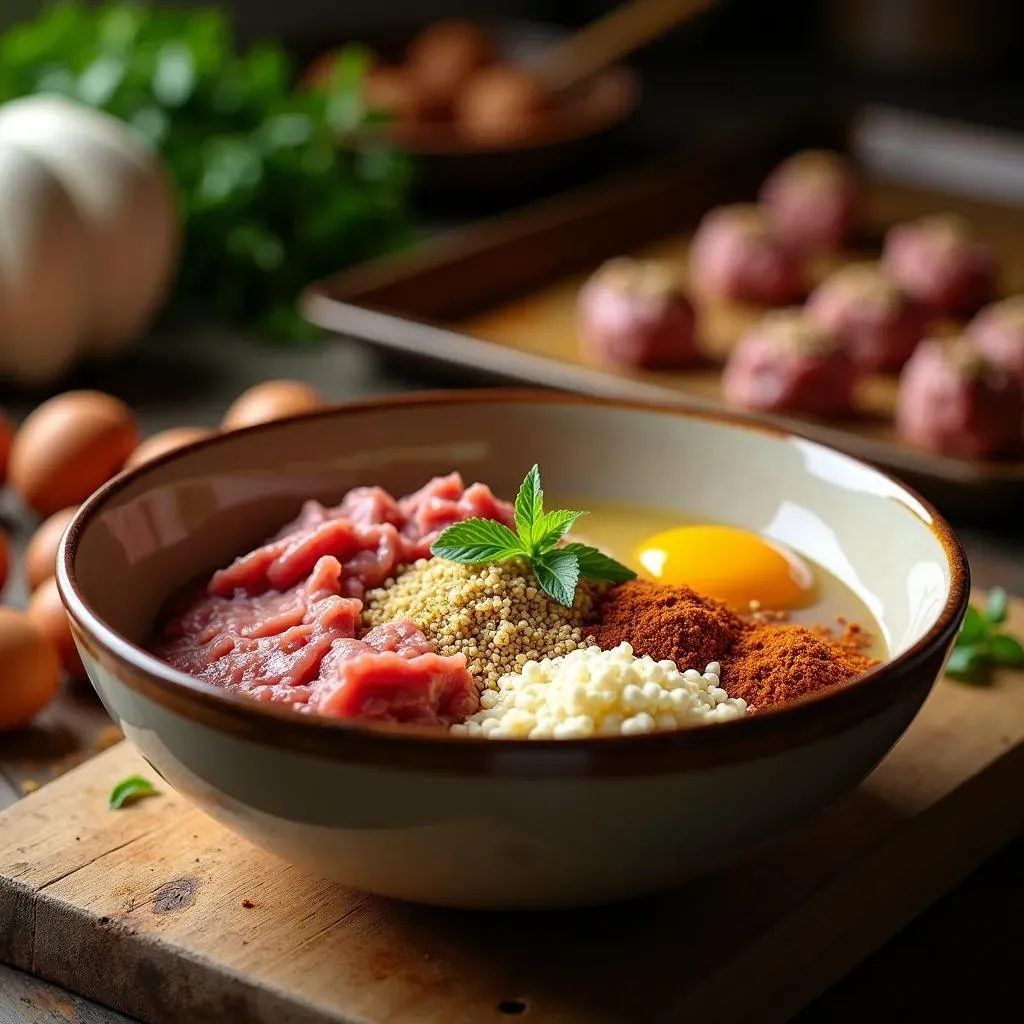
Meatball Recipe Substitutions & Variations
Meat Swaps: Beyond Beef
Okay, so you’ve nailed the classic 3 lbs ground beef meatball, but what if you're feeling adventurous? Let's talk meat swaps! Ground beef is great, but it's not the only option. You could totally use ground pork for a richer flavor. Or, for a lighter option, try ground turkey or chicken. Just keep in mind that turkey and chicken tend to be leaner, so you might need to add a bit more fat, like a tablespoon or two of olive oil, to keep them juicy. I’ve even experimented with a mix of beef and lamb, which adds a really unique, almost gamey taste. It’s all about what you’re in the mood for, so don’t be afraid to mix and match!
Breadcrumb & Binder Tweaks
Now, let's chat about breadcrumbs and binders. If you’re out of Italian breadcrumbs, don’t sweat it. Plain breadcrumbs work just as well. You can even use panko for a bit of extra crunch. Or, if you're trying to avoid gluten, you can swap out the breadcrumbs for almond flour or gluten-free breadcrumbs. I have even used crushed crackers in a pinch, it’s not the same but it does the trick. As for the binder, eggs are the usual choice, but if you’re out, you can use a tablespoon of cornstarch mixed with two tablespoons of water. It will do the job, it's not perfect but it’s a decent substitute.
Ingredient | Substitution |
|---|---|
Ground Beef | Ground Pork, Turkey, Chicken, Lamb |
Italian Breadcrumbs | Plain Breadcrumbs, Panko, Almond Flour, Gluten-Free Breadcrumbs |
Eggs | 1 tbsp Cornstarch + 2 tbsp Water |
Flavor Boosts & Add-Ins
Alright, so you've got your meat and binders sorted, now let’s talk about flavor! This is where you can really get creative. Want to kick up the spice? Add a pinch of red pepper flakes or a dash of cayenne pepper. Love herbs? Throw in some fresh parsley, basil, or oregano. I like to add a bit of finely grated Pecorino Romano cheese for an extra layer of saltiness. And if you want to sneak in some veggies, try adding finely chopped spinach or zucchini. Just make sure to squeeze out any excess water from the veggies, or you’ll end up with soggy meatballs. Remember, the sky's the limit, so experiment and find what you love. It’s your meatball adventure, enjoy it!
Tips for Perfect 3 lbs Ground Beef Meatballs
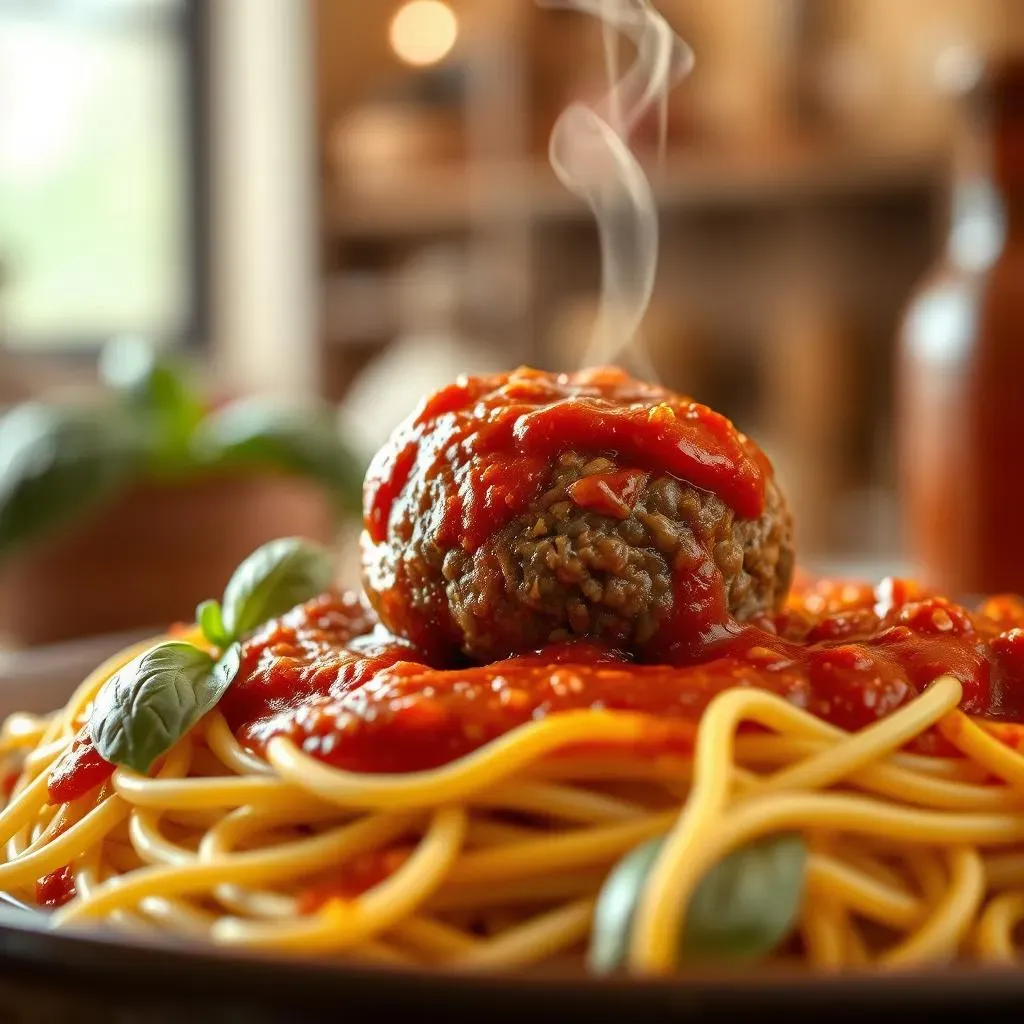
Tips for Perfect 3 lbs Ground Beef Meatballs
Don't Overmix, Seriously!
Okay, so I can't stress this enough: do not overmix your meatball mixture. It's like the golden rule of meatball making. When you overmix, you're developing the gluten in the breadcrumbs and the proteins in the beef, and that makes your meatballs tough and dense, like little rubber balls. You want tender, juicy meatballs, right? So, mix everything just until it's combined. Don’t knead it like dough. Use your hands gently, or a spoon, and stop when everything is just incorporated. Think of it like you're folding laundry, not wrestling a bear.
It's all about a light touch, and I know that can be hard for some of us, but trust me, it's worth it. The less you mess with it, the better your meatballs will be.
The Importance of the Panade
We talked about this earlier, but it’s so important that it's worth repeating. The panade, that mixture of breadcrumbs and liquid, is what makes the magic happen. It's what keeps your meatballs juicy and prevents them from drying out. The breadcrumbs soak up the moisture, and when cooked, they release it back into the meat. Think of it like a little moisture reservoir inside each meatball. If you skip the panade, you risk ending up with dry, crumbly meatballs, and nobody wants that. Make sure to give your breadcrumbs enough time to soak up the liquid before adding the beef. It's a simple step, but it makes a huge difference.
Rest and Simmer for Maximum Flavor
Once your meatballs are cooked, don't just serve them right away. Let them rest and simmer in your tomato sauce for at least 20-30 minutes. This gives the flavors time to meld together and allows the meatballs to soak up all that delicious sauce. The longer they simmer, the more tender and flavorful they'll become. It's like a spa day for your meatballs, they're just relaxing and getting all juicy and delicious. And remember, the sauce should be simmering gently, not boiling, or you'll risk toughening the meatballs. Be patient, let them take their time, and you'll be rewarded with the most amazing meatballs ever.
Tip | Action |
|---|---|
Don't Overmix | Mix ingredients until just combined |
Use Panade | Soak breadcrumbs for moisture |
Rest and Simmer | Simmer in sauce for 20-30 minutes |
Frequently Asked Questions About Meatballs
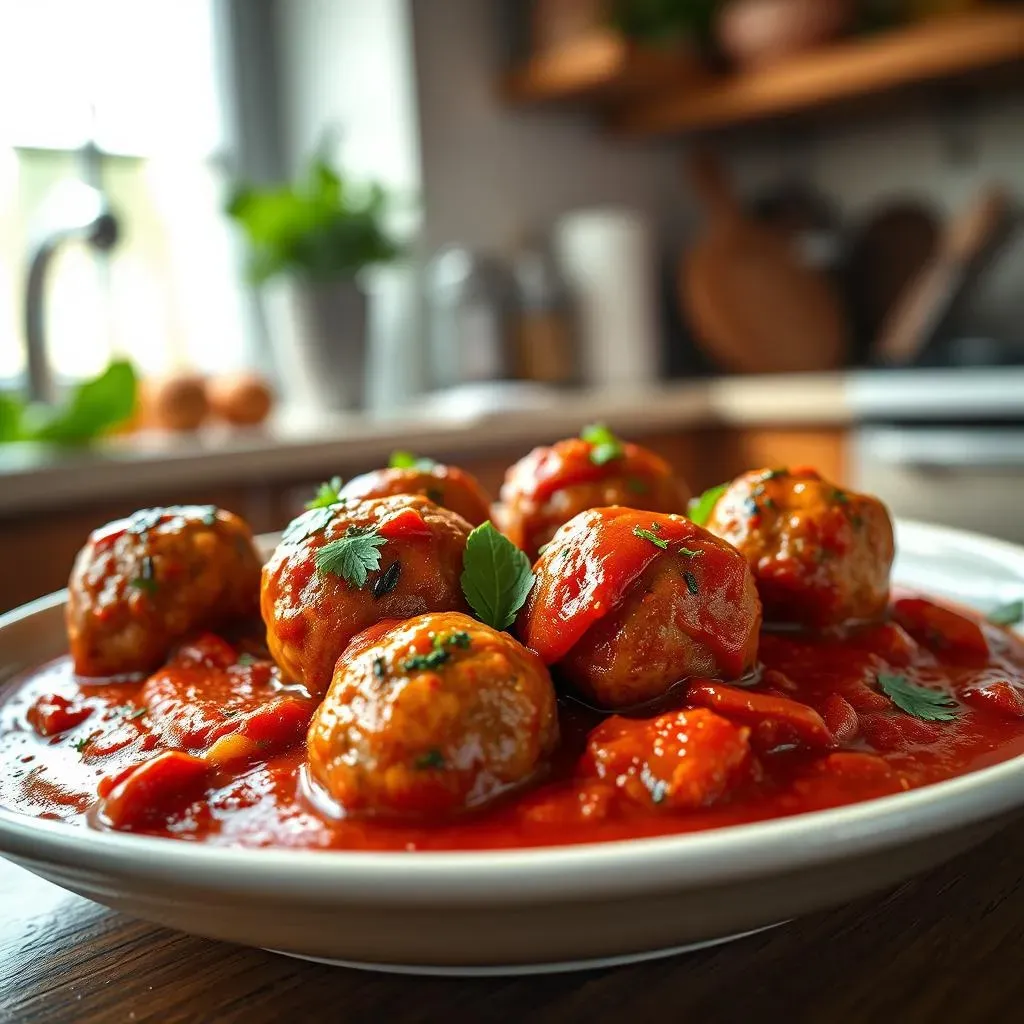
Frequently Asked Questions About Meatballs
Can I Freeze These Meatballs?
Absolutely! Meatballs are super freezer-friendly. Once they're cooked, let them cool completely. Then, you can either arrange them on a baking sheet and freeze them individually, or just toss them into a freezer bag or container. If you freeze them individually first, they won't stick together, making it easier to grab just the number you need later. When you're ready to eat them, you can either thaw them in the fridge overnight or just toss them frozen into your tomato sauce. They might need a little extra simmering time to heat through, but they'll taste just as good as fresh.
I usually make a big batch of these and freeze half, it’s a lifesaver on busy weeknights.
How Do I Prevent My Meatballs From Falling Apart?
Ah, the dreaded meatball crumble! It’s a common problem, but easily fixed. First, make sure you’re using enough binder. The eggs and breadcrumbs are there to hold everything together, so don’t skimp on those. Second, don’t overwork the meat mixture. Overmixing breaks down the fibers and makes them fall apart. Mix just until everything is combined, and then leave it alone. Finally, make sure your meatballs are fully cooked before you try to move them around. If they’re still a bit raw, they’ll be more likely to fall apart. Be gentle and patient, and your meatballs will stay in one piece.
What's the Best Way to Cook Meatballs?
That's a great question, and honestly, it depends on what you prefer. Baking is a hands-off approach, and it’s great if you’re making a big batch. Just pop them in the oven, and they'll cook evenly and consistently. Pan-frying gives you a nice crispy exterior, but you have to keep an eye on them and flip them frequently. If you're short on time, you can also cook them directly in the tomato sauce, but they won’t get that nice browned crust. I personally like to pan-fry them first for that crispy crust and then simmer them in the sauce for extra flavor and tenderness. It’s a bit more work, but totally worth it.
Cooking Method | Pros | Cons |
|---|---|---|
Baking | Hands-off, even cooking | Less crispy exterior |
Pan-Frying | Crispy crust, flavorful | Requires more attention |
Simmering in Sauce | Easy, adds flavor | Less crispy exterior |